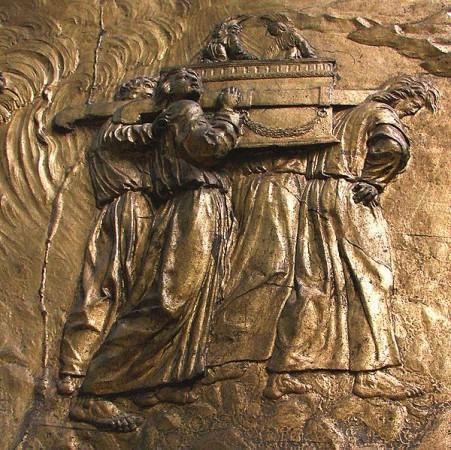
Since 586 BCE, after the First Temple built by King Solomon, the mystery over the disappearance of the Ark of Covenant has only deepened.
Treasure hunters, historians, archaeologists and Indiana Jones fans have closely tried to dig out the whereabouts of the lost Ark but all in vain. A text from a recently translated Hebrew document appears to hold some clues on the location of several ancient Biblical treasures, including the Ark of Covenant.
About the Ark of Covenant
In simple words, it was the dwelling place of 'God' and hence it was the holiest of the holy objects in possession of the Israelite.
As per the book of Exodus 25:10-22 - New American Standard Bible (NASB), it states that Ark of the Covenant was built on specifications given out by God himself:
10 "They shall construct an ark of acacia wood two and a half cubits long, and one and a half cubits wide, and one and a half cubits high. 11 You shall overlay it with pure gold, inside and out you shall overlay it, and you shall make a gold molding around it. 12 You shall cast four gold rings for it and fasten them on its four feet, and two rings shall be on one side of it and two rings on the other side of it. 13 You shall make poles of acacia wood and overlay them with gold. 14 You shall put the poles into the rings on the sides of the ark, to carry the ark with them. 15 The poles shall remain in the rings of the ark; they shall not be removed from it. 16 You shall put into the ark the testimony which I shall give you.
17 "You shall make a mercy seat of pure gold, two and a half cubits long and one and a half cubits wide. 18 You shall make two cherubim of gold, make them of hammered work at the two ends of the mercy seat. 19 Make one cherub at one end and one cherub at the other end; you shall make the cherubim of one piece with the mercy seat at its two ends. 20 The cherubim shall have their wings spread upward, covering the mercy seat with their wings and facing one another; the faces of the cherubim are to be turned toward the mercy seat. 21 You shall put the mercy seat on top of the ark, and in the ark you shall put the testimony which I will give to you. 22 There I will meet with you; and from above the mercy seat, from between the two cherubim which are upon the ark of the testimony, I will speak to you about all that I will give you in commandment for the sons of Israel.
Relevance of the Ark of Covenant
The Ark of Covenant, also known as the Tabernacle, held two stone tablets of law which Moses brought down from Mount Sinai. The Ark was built by craftsman Bezalel, who in the Old Testament was called by his name by God himself, according to Moses. The Israelites carried the Ark with them throughout their wanderings in the desert and it was renowned for its mysterious powers against the enemies of Israel. According to the Bible, the Wall of Jericho collapsed when the Jews walked around with the Ark.
The Ark was eventually brought to Jerusalem by King David. After the First Temple was built, King Solomon placed the Ark of the Covenant in the Temple. The Ark of the Covenant was kept in a special chamber within the Temple called the Holy of Holies (Kodesh Kodashim). No one was permitted to enter the Holy of Holies except for the high priest, and he was only allowed to enter once a year on Yom Kippur, the Jewish Day of Atonement. It remained there till Nebuchadnezzar destroyed the temple, after that it has been The Lost Ark of Covenant.
New clues on the Ark of Covenant
According to a report in Live Science, the newly translated text, called "Treatise of the Vessels" (Massekhet Kelim in Hebrew) states that the "treasures were concealed by a number of Levites and prophets," wrote James Davila, a professor at the University of St. Andrews in Scotland, who translated the Hebrew text and reported on it in an article in the book "Old Testament Pseudepigrapha More Noncanonical Scriptures Volume 1."
"Some of these [treasures] were hidden in various locations in the Land of Israel and in Babylonia, while others were delivered into the hands of the angels Shamshiel, Michael, Gabriel and perhaps Sariel," Davila observed in his research.
While the translation of the "Treatise" does not offer a map for the treasure hunter, it states that the whereabouts of the Ark "shall not be revealed until the day of the coming of the Messiah son of David...," which for the Christians points to the second coming of Jesus Christ. A similar observation is made in the book of Revelations in the New Testament Bible of the Christian, where it states that the Ark will return after the day of the lord and judgement is over. It says it will descend with God in New Jerusalem. Going by that, the Ark is not anywhere on the earth at this time.
In short, while the translations of "Treatise of the Vessels" does not offer a definite point, it does offer some clues, and a deeper study into it may bring out certain mysteries.










